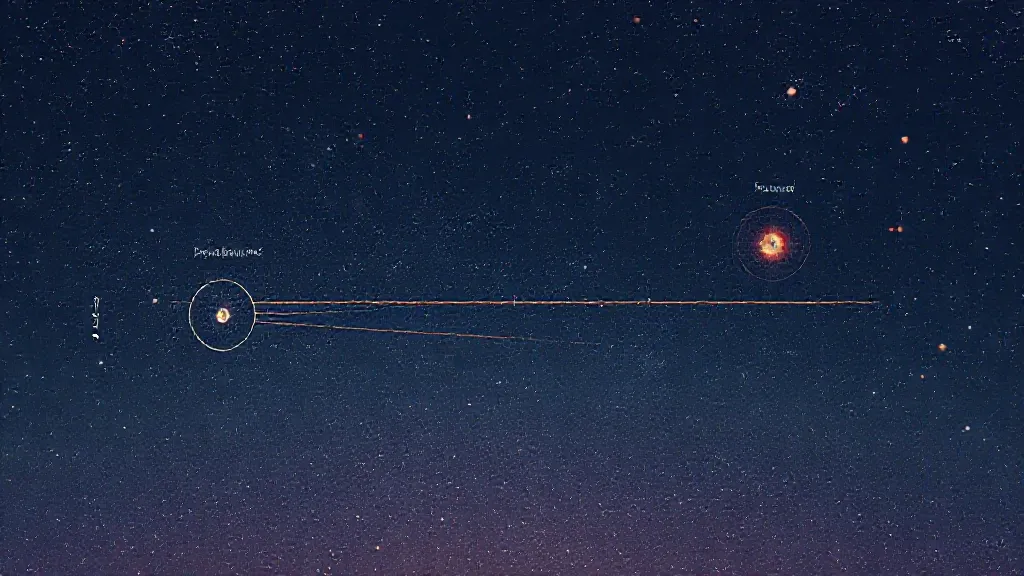The universe is an incomprehensibly vast expanse, and measuring its size poses significant challenges for astronomers and physicists. The difficulty lies not only in the sheer scale but also in the complex nature of space itself. To grasp the enormity of the universe, scientists employ various techniques, each with its own set of assumptions, limitations, and historical context.
This article delves into the methods used to measure the universe's size, the challenges faced, and the implications of these measurements for our understanding of the cosmos.
The Historical Context of Cosmic Measurement
Historically, the measurement of the universe began with the ancient Greeks, who attempted to estimate the distance to celestial bodies using geometry and the concept of parallax. However, it wasn't until the 17th century that more accurate methods emerged, thanks to advancements in telescopic technology.
Astronomers like Johannes Kepler and later Isaac Newton laid the groundwork for understanding celestial mechanics, which would eventually lead to more precise measurements of distances in space.
Parallax: The First Step in Measuring Distances
One of the fundamental techniques for measuring the distance to nearby stars is parallax. This method involves observing a star from two different positions in Earth's orbit around the Sun, creating a baseline for measurement.
The apparent shift in the star's position against the background of more distant stars allows astronomers to calculate its distance using simple trigonometry. The European Space Agency's Hipparcos satellite, launched in 1989, provided the first precise parallax measurements for thousands of stars, revolutionizing our understanding of stellar distances.
The Cosmic Distance Ladder: A Hierarchical Approach
To measure greater distances, astronomers utilize a series of techniques known as the cosmic distance ladder.
This method relies on a sequence of overlapping distance measurement techniques, each building upon the previous one. After parallax, astronomers use standard candles, such as Cepheid variable stars, whose intrinsic brightness is known. By comparing their brightness to their observed brightness, astronomers can determine their distance.
This technique has been crucial in measuring distances to galaxies and has helped refine our understanding of the universe's expansion.
Redshift and the Expanding Universe
Another vital method for measuring the universe's size involves the redshift of light from distant galaxies. As the universe expands, light from galaxies moving away from us shifts toward the red end of the spectrum.
By measuring this redshift, astronomers can determine the velocity of these galaxies and, through Hubble's Law, estimate their distance. This relationship has profound implications for cosmology, leading to the conclusion that the universe is expanding, a discovery that reshaped our understanding of cosmic evolution.
The Role of Supernovae in Cosmic Measurements
Type Ia supernovae serve as another critical tool in measuring the universe's size.
These stellar explosions have a consistent peak brightness, allowing astronomers to use them as standard candles. By observing the brightness of these supernovae in distant galaxies, scientists can calculate distances and, consequently, the rate of the universe's expansion. The discovery of the accelerating expansion of the universe, attributed to dark energy, was significantly informed by observations of Type Ia supernovae.
Challenges in Measuring the Universe
Despite these advancements, measuring the universe's size is fraught with challenges. One significant issue is the uncertainty associated with various measurement techniques. Different methods can yield varying results, leading to debates about the exact size and age of the universe.
Additionally, the influence of dark matter and dark energy complicates our understanding, as these components make up a significant portion of the universe yet remain poorly understood.
Implications of Cosmic Measurements
The measurements of the universe's size have profound implications for our understanding of fundamental questions in cosmology. They inform theories about the universe's origin, its ultimate fate, and the nature of space and time.
As our measurement techniques improve, so too does our understanding of the cosmos, leading to new discoveries and insights into the nature of reality itself.
Future Directions in Cosmic Measurement
Looking ahead, advancements in technology promise to enhance our ability to measure the universe's size more accurately. Upcoming telescopes, such as the James Webb Space Telescope, are expected to provide unprecedented views of the universe, allowing for more accurate distance measurements and a deeper understanding of cosmic phenomena.
As we continue to explore the cosmos, the quest to measure its size remains a fundamental challenge that drives scientific inquiry and discovery.
